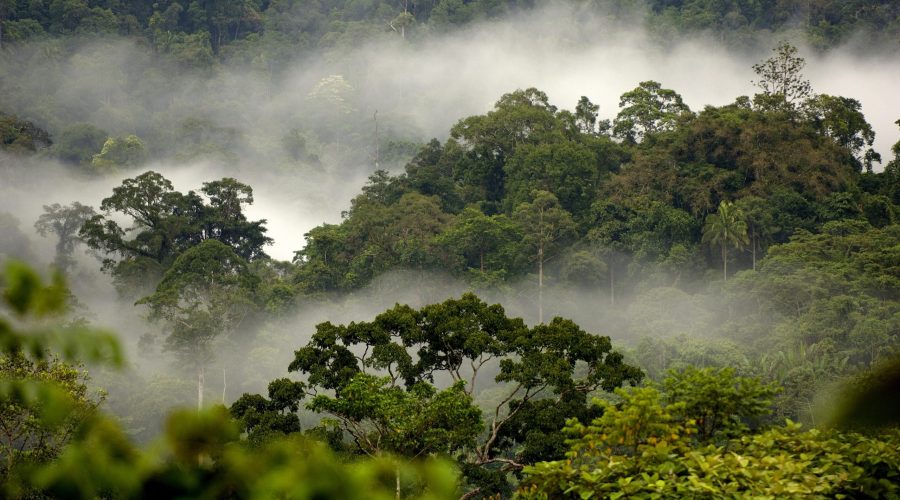Companies around the world increasingly recognize that taking action to preserve nature is not only the right thing to do – it is also good for business.
The ongoing decline in biodiversity poses significant risks for businesses, including potential supply chain disruptions, scarcity of raw materials, and increased operational costs. At the same time, businesses are uniquely positioned to halt and reverse biodiversity loss – and are making nature-positive solutions a strategic imperative in their practices and projects.
The specialists in WSP’s Earth and Environment business line are working with their clients to integrate considerations of biodiversity and climate change into every stage of their projects, says Paula Bentham, senior principal ecologist at WSP in Canada, based in Alberta. “Our clients and regulators recognize it’s not enough to forecast the environmental impacts of a project; they also see the importance of planning ahead – from the earliest phases of project design – to determine how they can remove or minimize any residual effects to biodiversity in the future.”
With WSP’s recent acquisitions that increased WSP in Canada to 12,000 employees, it is uniquely positioned to take the reins of the ever-growing demand for nature-positive projects.
Locally based with a global reach, the company has nearly 67,000 employees worldwide, 23,000 of whom work on environmental initiatives. In natural resource extraction, renewable energy, infrastructure, transportation, and more, the WSP team offers innovative practices and technologies designed to reduce project impacts on nature and maximize opportunities for recovery and restoration of biodiversity.
Stepping up to meet the urgency of the moment
“Biodiversity is declining faster on Earth than at any time in human history,” says Ms. Bentham. “Reports such as the WWF Living Planet Report [2020] indicate that in the last several decades, we’ve lost more biodiversity than the planet did over 10 million years.”
The science tells us that about 25 percent of the planet’s assessed plant and animal species are threatened by human actions, with a million species facing extinction, many within decades.
Meanwhile, the evidence of the economic harms from nature’s decline is coming into sharper focus every year. According to a 2020 study from the World Economic Forum, $ 44 trillion of economic value generation – over half the world’s total GDP – is moderately or highly dependent on nature and its services and, as a result, exposed to risks from nature loss.
Businesses, governments, and other stakeholders understand the dire nature of the threat, says Ms. Bentham, and are increasingly focused on finding new approaches and tools to get ahead of it.
“A real shift has occurred over the past decade or so,” she says, giving the example of federally regulated pipelines. “Proponents have had specific requirements to restore the pipeline right-of-way to caribou habitat, where actions start as early as during construction. We have also delivered nature-positive offsets by reclaiming legacy habitats in Canada’s caribou ranges that were degraded by past developments when regulations were less rigorous.”
The shift has also been evident to Olivier Joyal, executive vice-president of strategy and Execution, Earth and Environment for WSP in Canada, who’s based in Montreal. “In the past, clients would usually call our environmental team because they were in trouble – something was wrong on their site or they had an environmental problem to fix,” he says.
“Today, we are seeing a demand for a focus on biodiversity and the environment at a level I have never seen in my 25-year career,” Mr. Joyal notes. “Now, it’s not rare for the CEO of a mining company, for example, to request a meeting with our experts in biodiversity. Company executives and boards want to have answers on how they can have positive impacts on nature through their operations.”
Drivers of progress
More and more mechanisms in societies around the world are driving a move to bolster biodiversity protection and the achievement of other sustainability goals. There are market drivers, such as reporting requirements related to environmental, social, and governance (ESG) contributions, as well as financial drivers; for example, to get World Bank funding, an organization often has to have a plan for net gains in biodiversity for its project.
Perhaps the greatest influence to secure a better future for nature has been the United Nations Biodiversity Conference (COP15), hosted recently by Canada in Montreal. When it ended in December of 2022, the conference had secured a landmark agreement to address biodiversity loss, restore ecosystems, and protect Indigenous rights.
The plan includes concrete measures to halt and reverse nature loss, including putting 30 percent of the planet and 30 percent of degraded ecosystems under protection by 2030.
“Paula and I were both on the ground during COP15, and we witnessed first-hand the enthusiasm for dramatic action. The drive to achieve 30 percent protection by 2030 galvanized people like never before,” Mr. Joyal says.
He adds that businesses and other organizations were immediately eager to get WSP’s advice on how to put these commitments into action. “As soon as the conference ended, we started to receive more calls from investors and pension funds, and from massive asset owners in the oil and gas sector and in mining, asking us where they should start.”
With just a few days to go before the opening of the United Nations Climate Change Conference in Dubai (COP28), the experts at WSP in Canada are optimistic. “The main target of the Paris Climate Agreement, which is to contain the rise in temperatures, is still achievable,” says Mr. Joyal.
“With our thousands of environmental experts across the globe, we are in an incredible position to bring innovation to meet the sustainability needs of our clients,” he adds. “With our global reach, we are able to bring the best minds together to solve nature and biodiversity and climate change challenges in Canada and to optimize benefits for our clients and for the local communities in which we work.”





